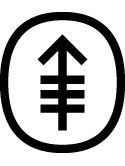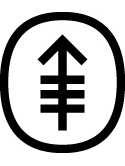Arbitrary oblique image sections for 3-D radiation treatment planning Journal Article
| Authors: | Mohan, R.; Brewster, L. J.; Barest, G.; Ding, I. Y.; Chui, C. S.; Shank, B.; Vikram, B. |
| Article Title: | Arbitrary oblique image sections for 3-D radiation treatment planning |
| Abstract: | Methods for selecting and computing arbitrary image sections for displaying anatomic and isodose information for three-dimensional treatment planning are investigated. Selection of the desired plane may be made by defining a plane that is perpendiculat to an existing image section (called the base image) and passing through a line on the base image. Alternatively, the anatomic structures displayed perspectively in three dimensions as a series of contours that can be rotated and translated may be used to define an arbitrary plane fore image reconstruction. The viewing screen is considered to be the plane of interest. As a typical three-dimensional image of 30 to 60 sections requires considerable computer storage (on the order of 25 megabytes), a reconstruction algorithm may need extensive memory space or CPU and disk i/O time. Of the schemes examined, we believe the following is the most efficient. One pair of images is read from the disk at a time in sequence and intersections of the rows of the cutting plane with the box formed by the consecutive images are computed. Pixel values of all points between the given images are computed by interpolation. Special cases, such as the cutting plane being parallel to or coincident with an existing image, must be considered separately. © 1987. |
| Keywords: | algorithms; algorithm; radiotherapy planning, computer-assisted; computer assisted radiotherapy; computer graphics; radiotherapy, computer-assisted; three-dimensional treatment planning; human; article; support, u.s. gov't, p.h.s.; ct treatment planning; arbitrary image sections |
| Journal Title: | International Journal of Radiation Oncology, Biology, Physics |
| Volume: | 13 |
| Issue: | 8 |
| ISSN: | 0360-3016 |
| Publisher: | Elsevier Inc. |
| Date Published: | 1987-08-01 |
| Start Page: | 1247 |
| End Page: | 1254 |
| Language: | English |
| DOI: | 10.1016/0360-3016(87)90202-1 |
| PUBMED: | 3610712 |
| PROVIDER: | scopus |
| DOI/URL: | |
| Notes: | Article -- Export Date: 5 February 2021 -- Source: Scopus |
Altmetric
Citation Impact
BMJ Impact Analytics
MSK Authors
Related MSK Work





